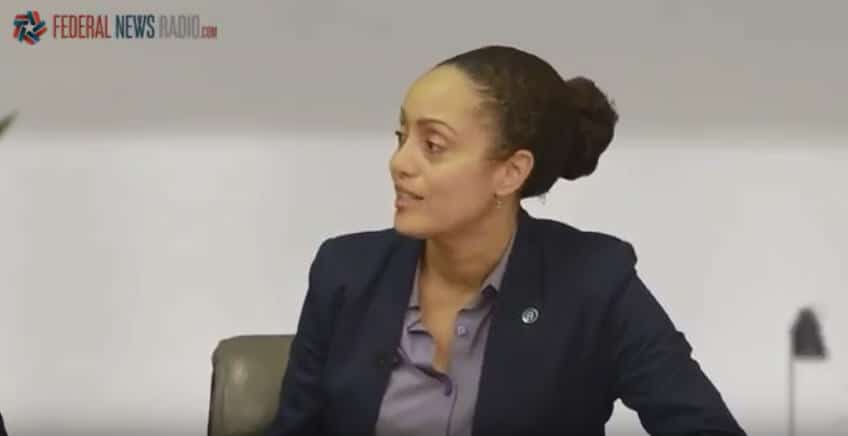New OSINT foundation aims to ‘professionalize’ open source discipline across spy agencies
The new foundation plans to provide OSINT certifications and advocate for a dedicated program of record within the intelligence community.
Former intelligence leaders are trying to boost the role of open source intelligence at U.S. spy agencies through a new foundation that plans to develop community-wide standards and help professionalize the OSINT workforce.
The unveiling of the OSINT Foundation comes at a time when social media feeds and other public analysis are providing unprecedented public insights into world events like Russia’s invasion of Ukraine. Meanwhile, Congress and other advocates are calling on intelligence leaders to develop new open source strategies to better take advantage of publicly available information.
The foundation’s board includes several former high ranking officials, including Ron Burgess, a retired Army lieutenant general who served as director of the Defense Intelligence Agency; Barbara Fast, a retired Army major general who commanded the Army Intelligence Center; and Tom Fingar, the former deputy director of national intelligence for analysis.
Barbara Alexander, the president of the foundation, said the organization will be focused on developing OSINT professionals within the U.S. intelligence community. The foundation’s official launch will be Aug. 1.
“Our focus is to help professionalize the OSINT discipline for those people who are working on it across the intelligence community,” Alexander said on Inside the IC.
Alexander is also a senior advisor at General Dynamics Information Technology. After starting out her career as a European political-military intelligence analyst for the Defense Intelligence Agency, she later led the establishment of the Department of Homeland Security’s Open Source Enterprise while serving in DHS’ Intelligence and Analysis Division.
“I quickly realized that, especially in DHS with its missions that are all hazards and all threats and supporting the state and local organizations, open source was critical,” Alexander said.
Eliot Jardines, who will serve as director of operations for the foundation, said OSINT has progressed substantially within the intelligence community since his days as an Army reservist assigned to 434th Military Intelligence Detachment. Jardines is currently president of Gnosis Solutions, a training and intelligence consultancy.
“Early on, open source intelligence was a craft done by isolated craftspeople,” he said. “There was very little in the way of infrastructure, certainly very little technology, other than get on the Internet and surf.”
In 2005, Jardines was appointed inaugural assistant deputy director of national intelligence for open source and oversaw the establishment of the Open Source Center. In 2015, the center was rebranded as the Open Source Enterprise and shifted under the CIA’s Directorate of Digital Innovation.
“Increasingly, the discipline is becoming more and more specialized and highly dependent on things like social network analysis and data science,” Jardines said. “Back in the day, it was done by one individual poking around trying to answer a question and now we’re sifting through huge volumes of data, looking for patterns and gaps and whatnot. So it has increasingly grown to be far more complex and nuanced than early on.”
The foundation will be specifically focused on OSINT’s use within the intelligence community to answer questions for national leadership and policymakers. That’s opposed to broader definitions of OSINT, such as investigations done by groups like Bellingcat.
But Jardines said the intel community can learn from the rapidly evolving OSINT industry and hobbyist community.
“We should be paying a lot of attention to what’s being done and see what tactics, techniques and procedures — ‘steal’ might be too strong a word — but what TTPs can we liberate from that hobbyist community?” Jardines said. “It’s absolutely fascinating to see what crowdsourced OSINT can do, and so we certainly value that work, because it really drives a lot of innovation and change.”
Despite recent efforts within the intelligence community to standardize OSINT, Alexander and Jardines said it still often suffers from a lack of recognition at U.S. intelligence agencies, with even things as simple as its definition often up for debate, despite it being defined in a 2006 law.
Part of the problem may be the intelligence community’s penchant for classified sources — spy satellites and covert agents — as opposed to using publicly available information.
“We have often said that it’s a lot sexier to talk about spooky collection disciplines,” Alexander said. “I think historically OSINT was used as the ‘additional information.’ You went to your traditional national technical means or your [Human Intelligence] collection to get the real skinny on what was going on, and then got the additional stuff from OSINT.”
Part of the foundation’s plan is to advocate for a program of record for OSINT throughout the intelligence community, in order to secure dedicated billets and funding.
Some agencies are further along in establishing open source programs than others. In addition to the CIA’s Open Source Enterprise, the Defense Intelligence Agency established an Open Source Intelligence Integration Center in 2019. The State Department’s intelligence arm is also establishing a Strategic Open Source Coordination Office.
“Each agency has to have their own open source capability, because they have unique authorities,” Jardines said. “And they have unique requirements and policies and targets they go after.”
Meanwhile, Congress is asking for an updated characterization of OSINT. The 2022 Intelligence Authorization Act directs the Office of the Director of National Intelligence and the under secretary of Defense for intelligence and security to publish updated definitions of several intelligence terms, including open-source intelligence.
Lawmakers are also pushing agencies to improve their use of open source intelligence to counter the government of China.
“The Intelligence Community must reorient to engage in a strategic competition with the PRC while countering China’s malign activities globally,” the Senate’s report on the 2022 authorization bill states. “To do so, it must continue to build open source intelligence capabilities and augment capacity; enhance sharing of intelligence capabilities; and strengthen the analytical and collection capabilities relating to non-military threats including technology competition.”
Despite some of the broader policy discussions, a primary focus for the foundation will be developing “OSINT practitioners,” according to Alexander. The foundation will first establish a “practitioner committee” with seven representatives from government and industry to be appointed by Alexander.
“We say that if you are one of the seven people on the practitioner committee, we consider you to be one of the seven subject matter experts in the nation on open source,” Alexander said.
Similar committees focused on tradecraft, resourcing/policy, and certifications will follow the practitioner group.
The foundation will also publish OSINT standards, which will often be derived from standards the intelligence community has already published, to help drive open source educational efforts at universities and other institutions.
The foundation has also partnered with the International Association for Intelligence Education and plans to eventually start offering a basic OSINT certification to verify that an individual has a grasp of open source fundamentals.
While each agency has their own open source training and standards specific to their missions, the idea is that the foundation can help set a baseline for a future open source workforce.
“This is a great opportunity,” Alexander said. “It’s one of the few disciplines that you can actually do outside of the government. You don’t need to be cleared. A lot of universities are starting intelligence studies programs. So this will enable us to open the eyes of incoming professionals as to what OSINT is and how it’s used across the across the community.”
Copyright © 2024 Federal News Network. All rights reserved. This website is not intended for users located within the European Economic Area.
Follow @jdoubledayWFED
Related Stories





